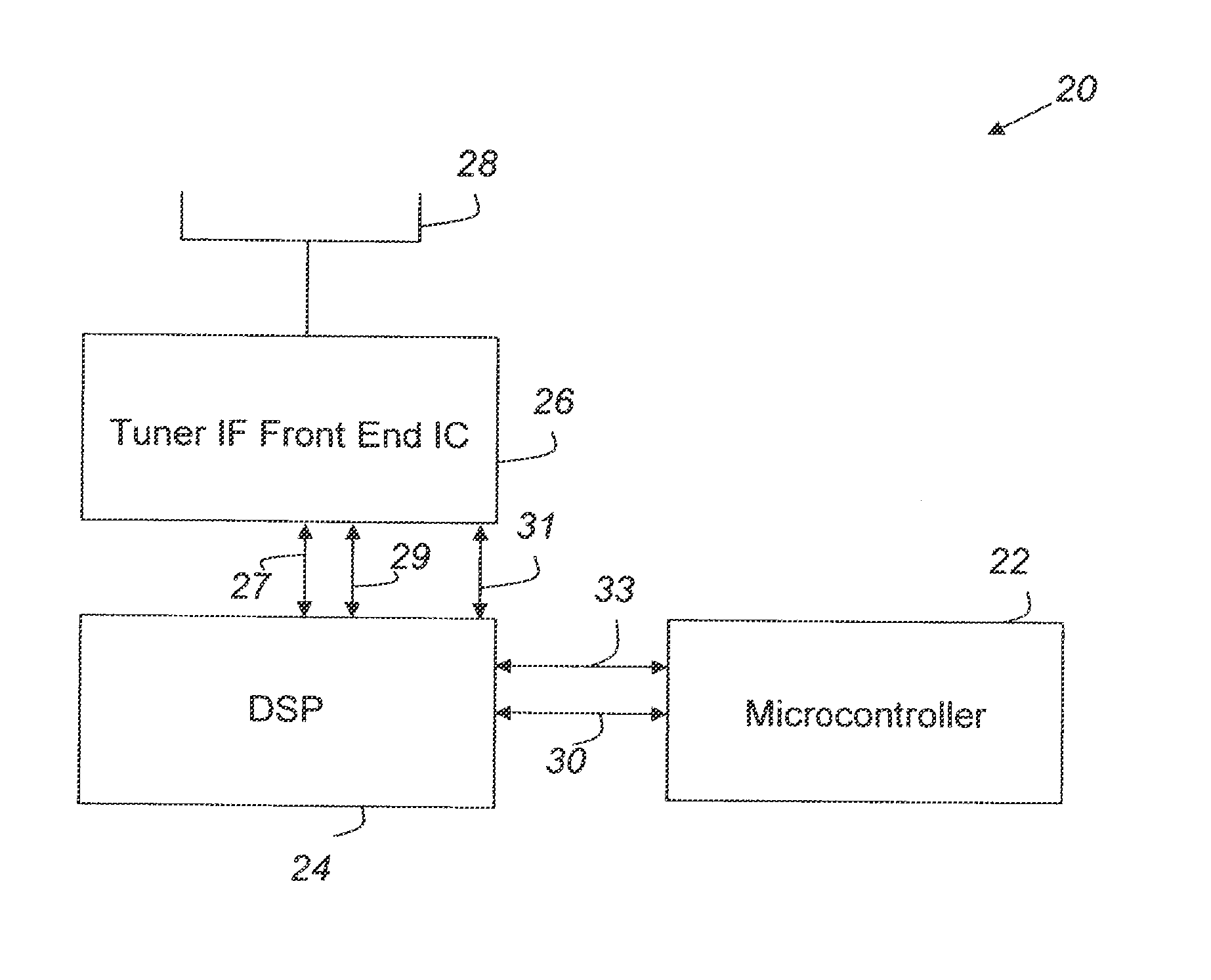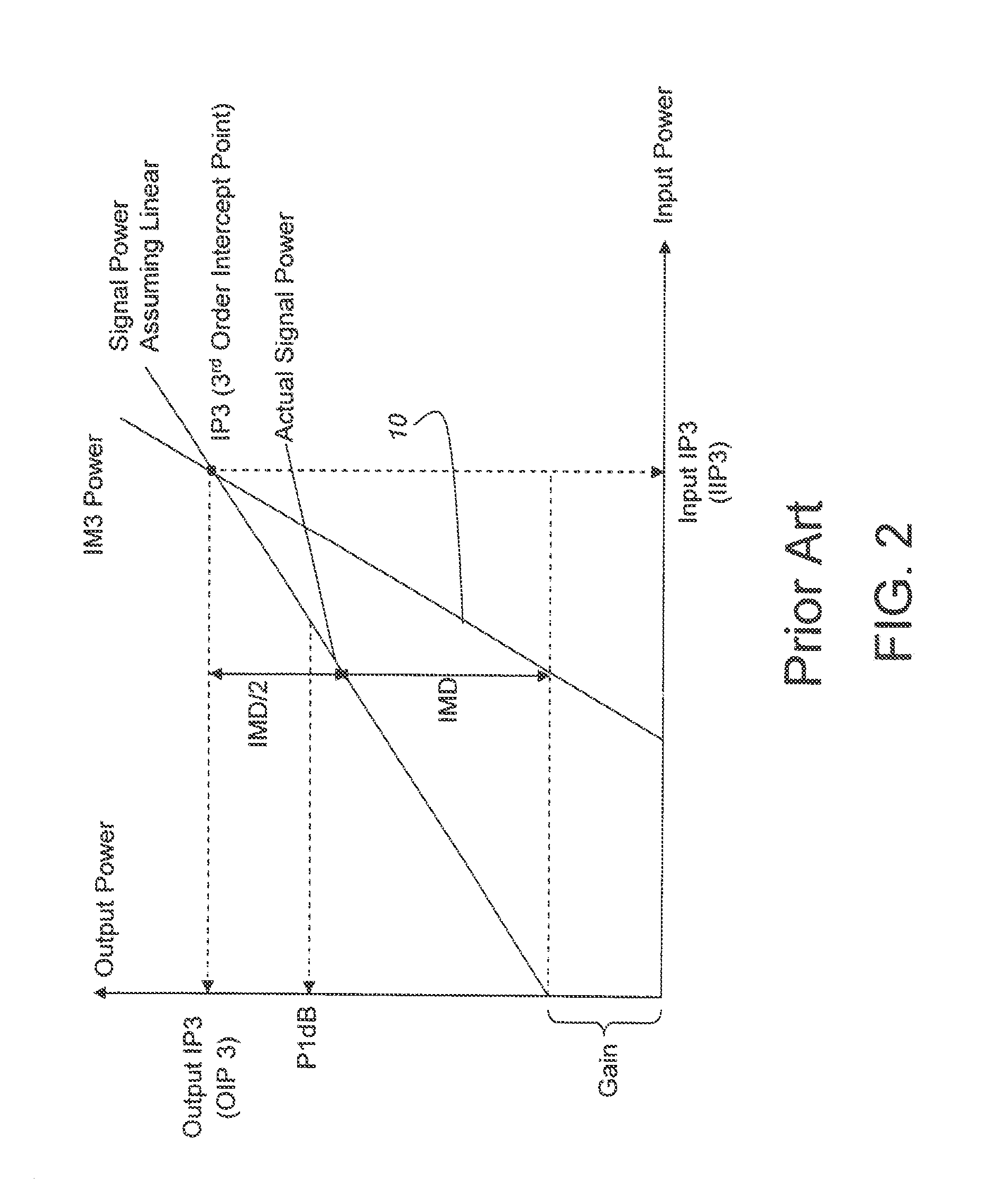Method and apparatus for sensing inter-modulation to improve radio performance in single and dual tuner
a technology of intermodulation and sensing apparatus, applied in the field of vehicles, can solve problems such as intermodulation distortion arising, front end overload distortion, clipping distortion at the intermediate frequency analog-to-digital conversion chain process,
- Summary
- Abstract
- Description
- Claims
- Application Information
AI Technical Summary
Benefits of technology
Problems solved by technology
Method used
Image
Examples
Embodiment Construction
[0054]The embodiments hereinafter disclosed are not intended to be exhaustive or limit the invention to the precise forms disclosed in the following description. Rather the embodiments are chosen and described so that others skilled in the art may utilize its teachings.
[0055]In one embodiment, the method enables the radio to build up signal level metrics of frequencies in the FM band in a memory repository and then utilize the information using the formulae such as (1) and (2) below in identifying the artifact:
L*f1+ / −M*f2+ / −N*f3, where f1, f2 and f3 are distinct frequencies and L+M+N=3, where L, M and N are integers (1)
OR from
L*f1+ / −M*f2, where f1, f2 are distinct frequencies and L+M=3, where L and M are integers (2)
The way the information is updated in the repository memory area may vary between single and dual tuner.
[0056]Referring now to FIG. 8, there is shown one embodiment of a single tuner radio system 20 of the present invention. Radio system 20 may include a microcontrol...
PUM
 Login to View More
Login to View More Abstract
Description
Claims
Application Information
 Login to View More
Login to View More - R&D
- Intellectual Property
- Life Sciences
- Materials
- Tech Scout
- Unparalleled Data Quality
- Higher Quality Content
- 60% Fewer Hallucinations
Browse by: Latest US Patents, China's latest patents, Technical Efficacy Thesaurus, Application Domain, Technology Topic, Popular Technical Reports.
© 2025 PatSnap. All rights reserved.Legal|Privacy policy|Modern Slavery Act Transparency Statement|Sitemap|About US| Contact US: help@patsnap.com



